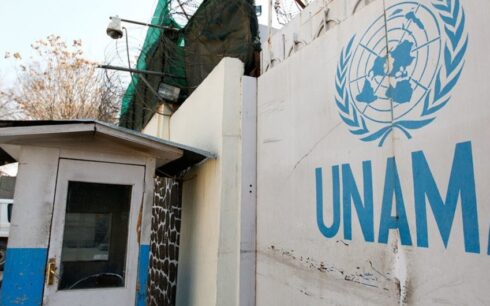Food insecurity in Afghanistan remains a pressing concern as 14.8 million people are projected to face critical shortages during the winter months, the UN International Children’s Emergency Fund (UNICEF) said.
The figure accounts for 32 percent of the Afghan population, who will require urgent humanitarian food assistance from November 2024 to March 2025. UNICEF’s report underscores the challenges facing the nation, citing a fragile economy, limited access to basic services, and the lingering effects of 40 years of conflict. These issues are compounded by natural disasters, climate shocks, and shifting political dynamics in the region.
Afghan returnees face heightened challenges
The humanitarian crisis is exacerbated by the ongoing influx of Afghan returnees from Pakistan. Since mid-September 2023, more than 758,000 individuals have been registered crossing back into Afghanistan. UNICEF has been providing aid at border points like Torkham and Spin Boldak, offering health services, polio vaccination campaigns, clean water and sanitation (WASH), nutrition programs, and child protection interventions.
“UNICEF continues to support the response,” the report stated, emphasizing the agency’s efforts to mitigate the growing humanitarian challenges.
Voices of Hardship
The report also highlighted the human toll of the crisis, with individuals like Mahboba, a former employee of a private organization in Badghis, offering a glimpse into life under Taliban rule.
“For five or six years, I worked and earned 21,000 Afghanis a month. I was the sole breadwinner for my family,” she said. “But for the past two years, the Taliban have prohibited me from working. Now, I can’t even provide one meal a day for my children.”
Mahboba, who cares for a family of five, described the winter as a season of unbearable sorrow. “We don’t have proper food to eat. Winter has come, and we don’t know what to eat, what to wear, or what to do. There is absolutely no way forward,” she said.
Others share similar struggles. In Herat, a resident described waiting in vain for work each day. “There are eight people in my family, and there’s no labor available,” he said. “The price of rice, oil—everything—has gone up. We can’t afford it.”
Abdullah, a resident of Kabul, spoke of the desperate measures families are taking. “I dismantled my chair to keep my forty-day-old baby warm because we don’t have coal,” he said. “Since morning, I’ve only earned ten Afghanis. How can we survive this way?”
Shrinking aid amid funding shortages
The World Food Programme (WFP) has warned that the situation may worsen, as millions of Afghans are set to endure a harsh winter without adequate food assistance. Severe funding shortages mean the agency will only be able to support six million people this winter, leaving millions more without help.
UNICEF noted that Afghanistan remains the second-largest humanitarian crisis in the world, with more than half the population in need of aid. While conflict has subsided, the drivers of need have shifted toward economic hardship and climate-induced shocks, compounded by significant operational barriers for aid organizations.
As Afghans face another winter of struggle, the international community’s ability to sustain critical aid programs is being stretched thin, raising concerns about the nation’s long-term recovery prospects.





